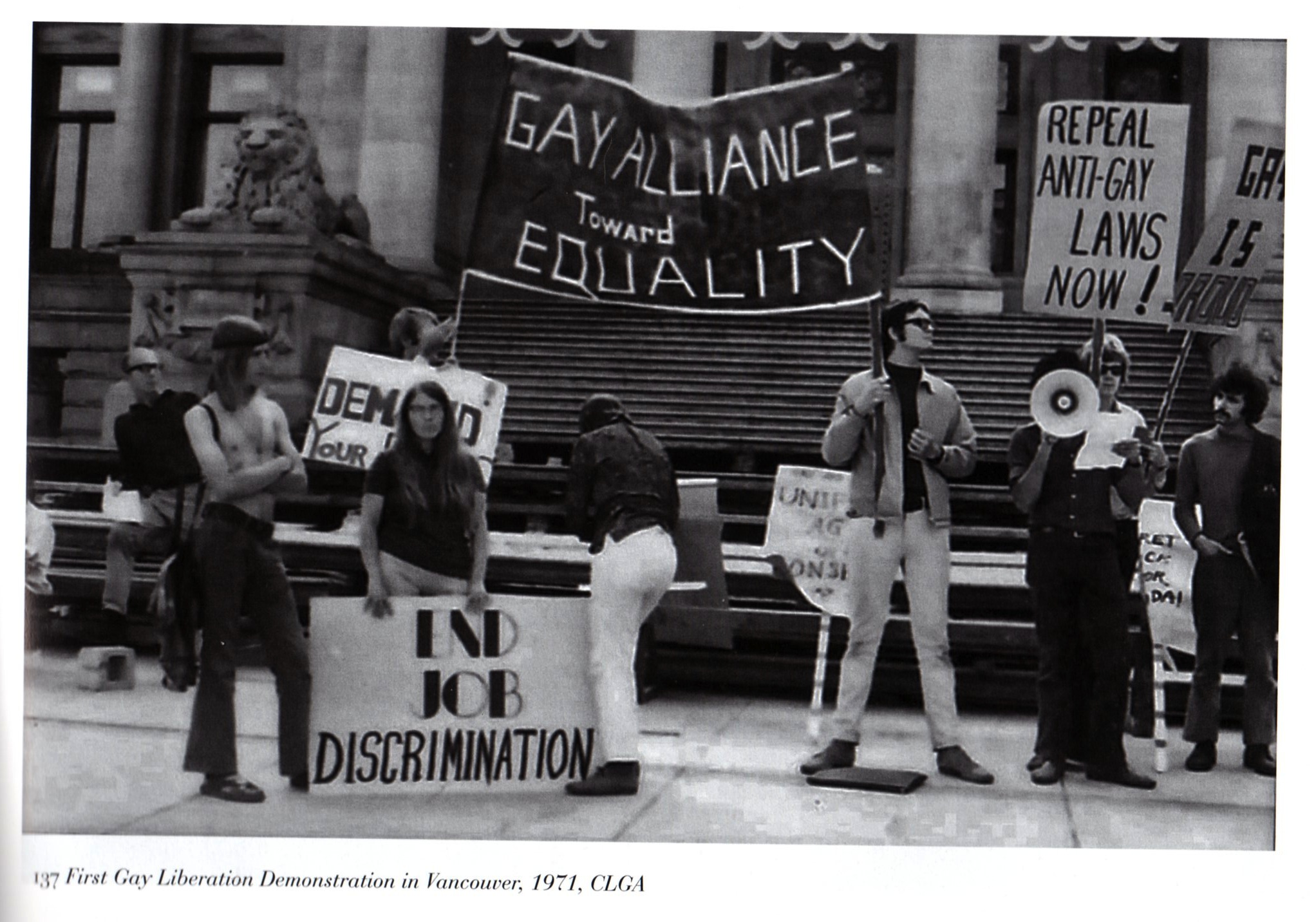Kids and Cannabis: 9 Reasons To Not Be Afraid of Young People Using Marijuana
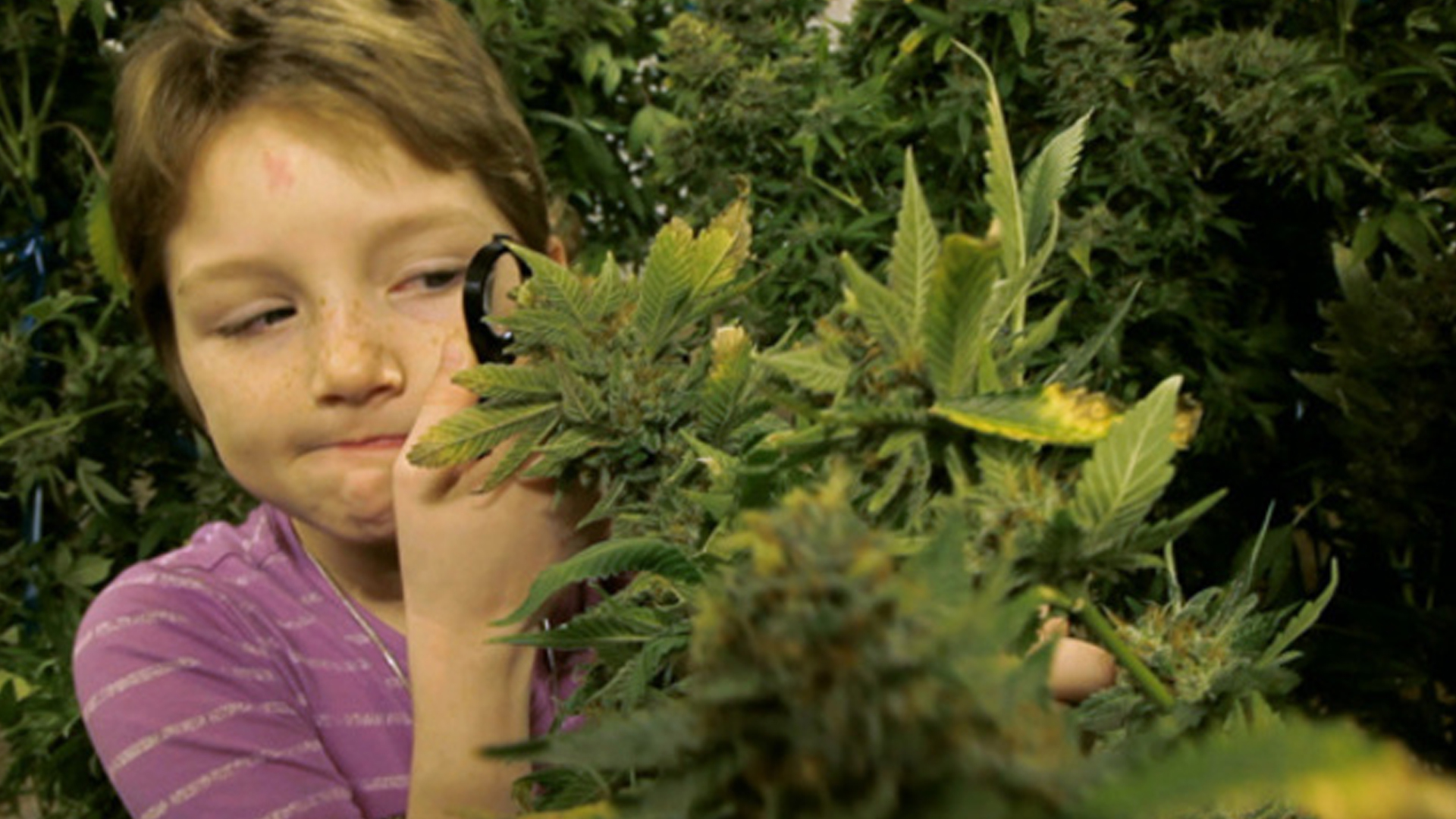
CANNABIS CULTURE – I started using cannabis when I was 14 years old. It helped me deal with my fear of death, it enhanced my performance during activities I enjoyed, and it helped me deal with everyday stress, depression, fatigue, loss of appetite, lack of sleep, lack of motivation and lack of focus.
I knew from my first session that I was a pothead, and nothing anyone told me after that first session would be able to negate that strong sense of connection I had with this plant – a plant I would later learn was the primary “co-evolutionary plant-partner” of humanity.
It turns out I’m not alone. Whenever I ask a crowd at a pot rally how many of them began smoking in their teens, it’s always a sizable majority that says yes. Statistics indicate that, in the US in 2020, 42,280 youths were arrested for “drug abuse violations” – an average of nearly 116 per day. A study published in 2019 concluded that “Legalization, as implemented through 2016, did not appear to reduce arrests for cannabis possession among youths, despite having benefited adults.” And black youths are arrested at different rates than white youths:
“As an increasing number of states legalize marijuana, the question of youth criminalization has repeatedly come to the fore. For example, when New Jersey recently adopted two cannabis bills — one to decriminalize existing cannabis penalties and the other to create a legal market – Gov. Phil Murphy and the state legislature clashed about the specifics of youth penalties for months. Youth criminalization is a stark racial justice issue in New Jersey, where, according to a 2017 Urban Institute report, Black youth were 29.2 times more likely to be detained than white youth in 2013.”
In Canada in 2007, youth comprised 24% of those accused of “cannabis crimes.” Arrest rates for young teens pre-legalization and post legalization have been decreasing, but continue to persist:
“Among youth, there were 1,858 young persons charged with cannabis-related offences in 2017, representing a rate of 78 per 100,000 population aged 12 to 17 years. In 2020, there were 249 youth charged with cannabis-related offences, representing a rate of 10 per 100,000 population. This is an 87% decrease in the rate since before the legalization of cannabis (2017). Youth in 2020 were more commonly charged for cannabis offences related to possession (50% of all youth charged with cannabis-related offences), followed by those related to sale (22%) and distribution (20%).”
The “cannabis inherently harms the young” myth is now the number one way our rulers justify their crackdowns and monopolies and restrictions and continued discrimination against us. If the true facts surrounding cannabis and kids were well-known – namely that cannabis is not inherently harmful to youth, and can be beneficial to them – then the powers-that-be could no longer justify their brutality towards us.
Here are nine well-established, but not well-known, facts involving cannabis and kids.
#1 Cannabis is used in pediatrics.
There is a well-established record of cannabis being used as a safe medicine for children. In childbirth, for cystic fibrosis, neurotrauma, as a sedative, a pain-killer, an antibiotic, for diarrhea, teething, cough, whooping cough, strep throat, convulsions and asthma.
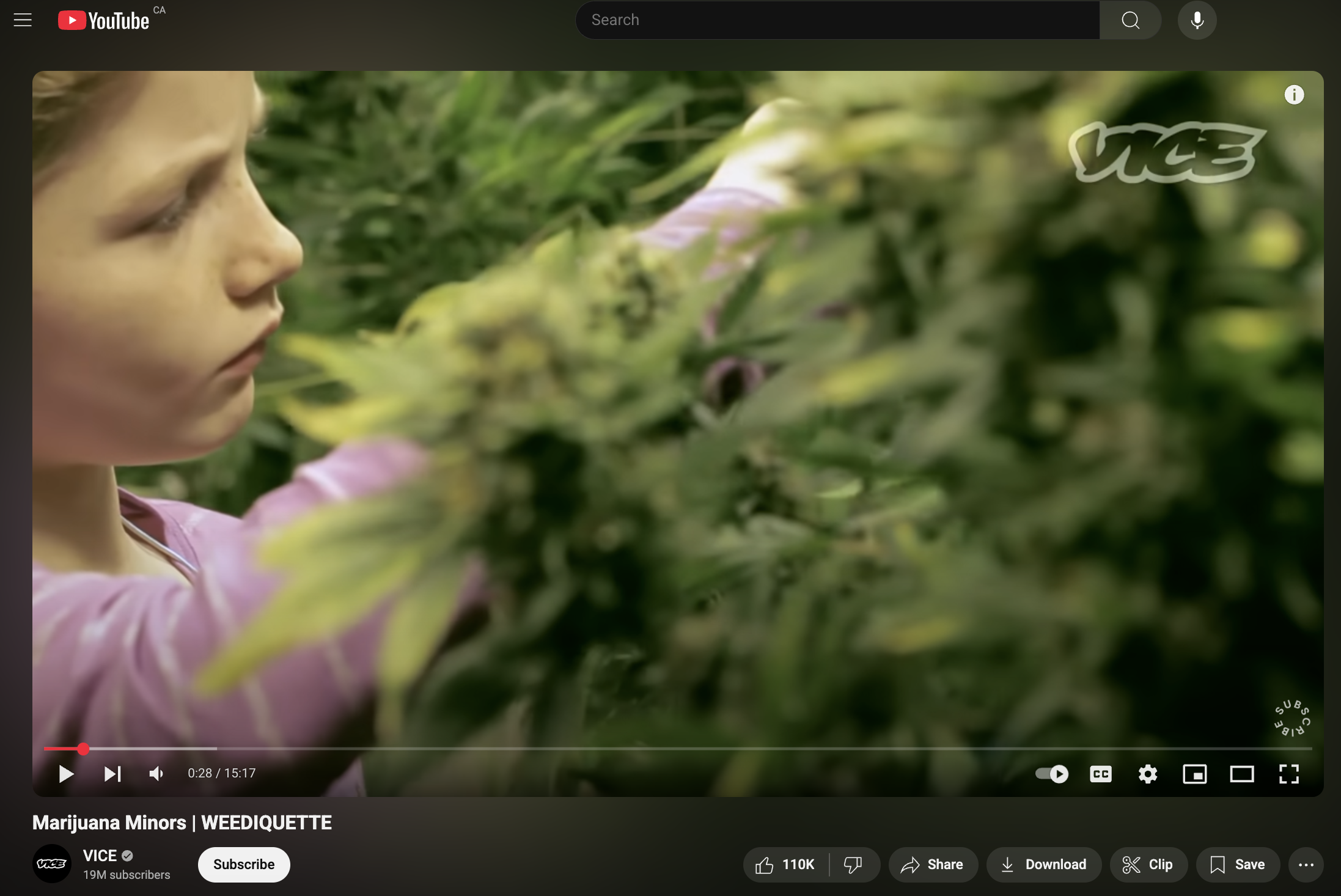
Image from https://www.youtube.com/watch?v=TXKjRkkoIOU
#2 Pre-teens don’t get high from using cannabis.
Because CB1 receptors develop only gradually during childhood, children below the age of 13 generally don’t feel much of the psychoactive effects of cannabis – even while using large doses! If they feel any euphoria at all, it’s strikingly mild. There is a large body of evidence testifying to this.
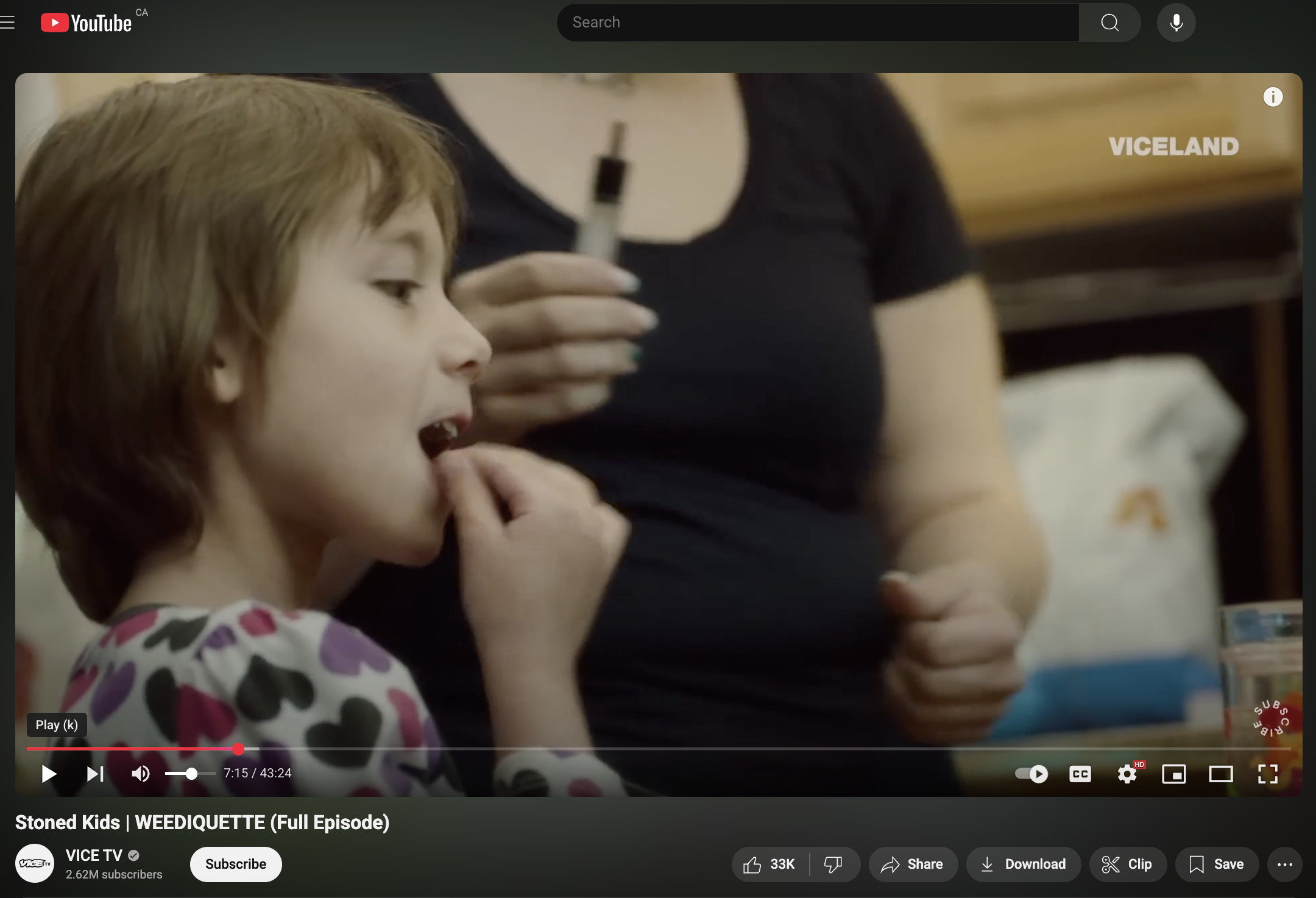
Image from https://www.youtube.com/watch?v=vMZCq56tToc
#3 Teens sometimes need anti-depressants and relaxants and drugs to focus.
There has been a dramatic increase in the use of anti-depressants by both teens and adults in North America – somewhere in the realm of a 4x increase over the last 30 years. At least 5% of teens now use pharmaceutical anti-depressants, and 6% use attention-deficit drugs to focus in school. At least 4 million teens in North America are on one or both of these drugs.
Between the war on useful flowers (the war on drugs), the oil wars, the Fukushima nuclear power disaster, climate destabilization, the great garbage patch in the ocean, a failing economy, the wealth gap, the drone strikes, the refugee crisis, the rise of racist politicians and everything else that is harsh or frightening going on in the world today, can you blame some teens for being stressed out, sad, or unfocused?
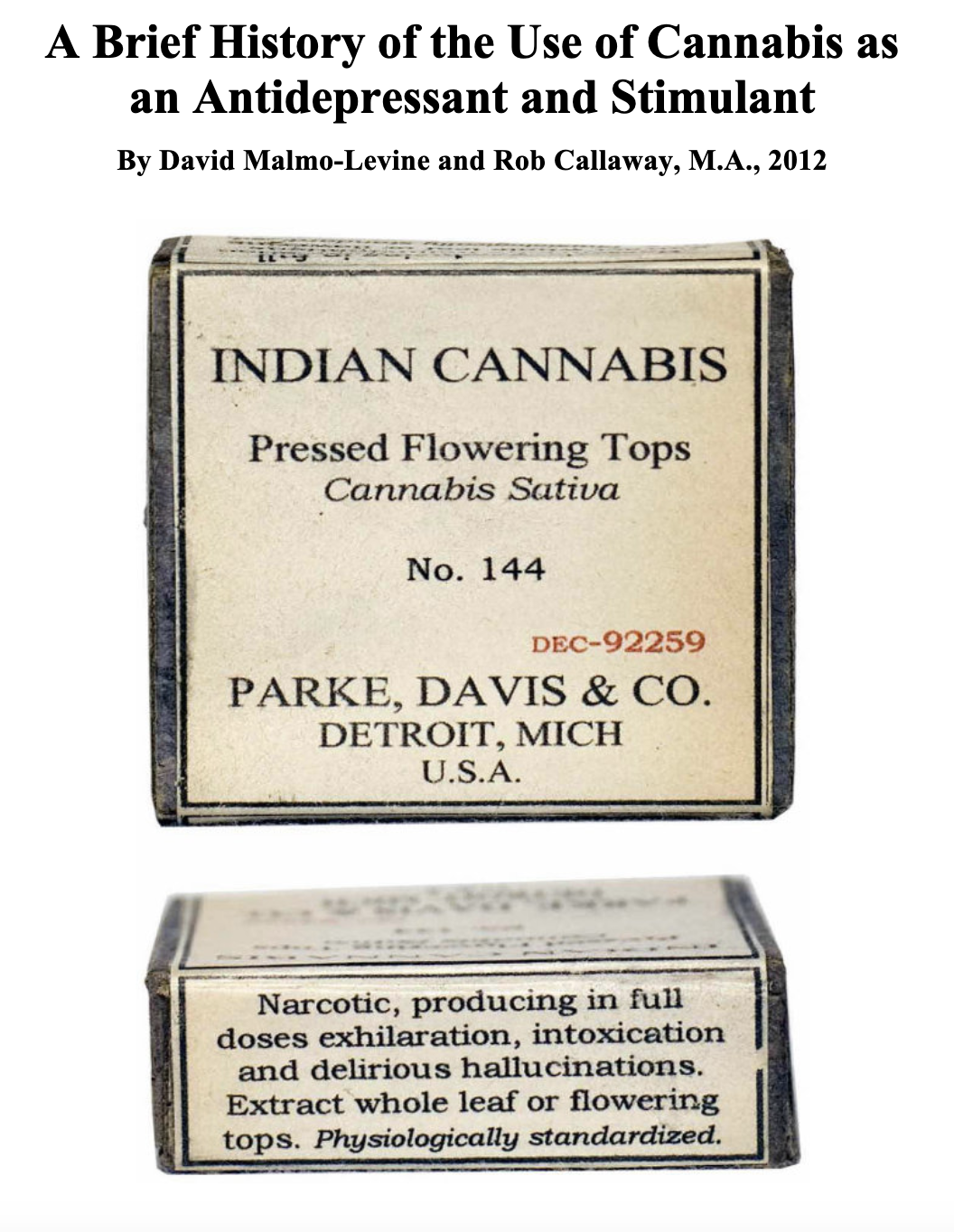
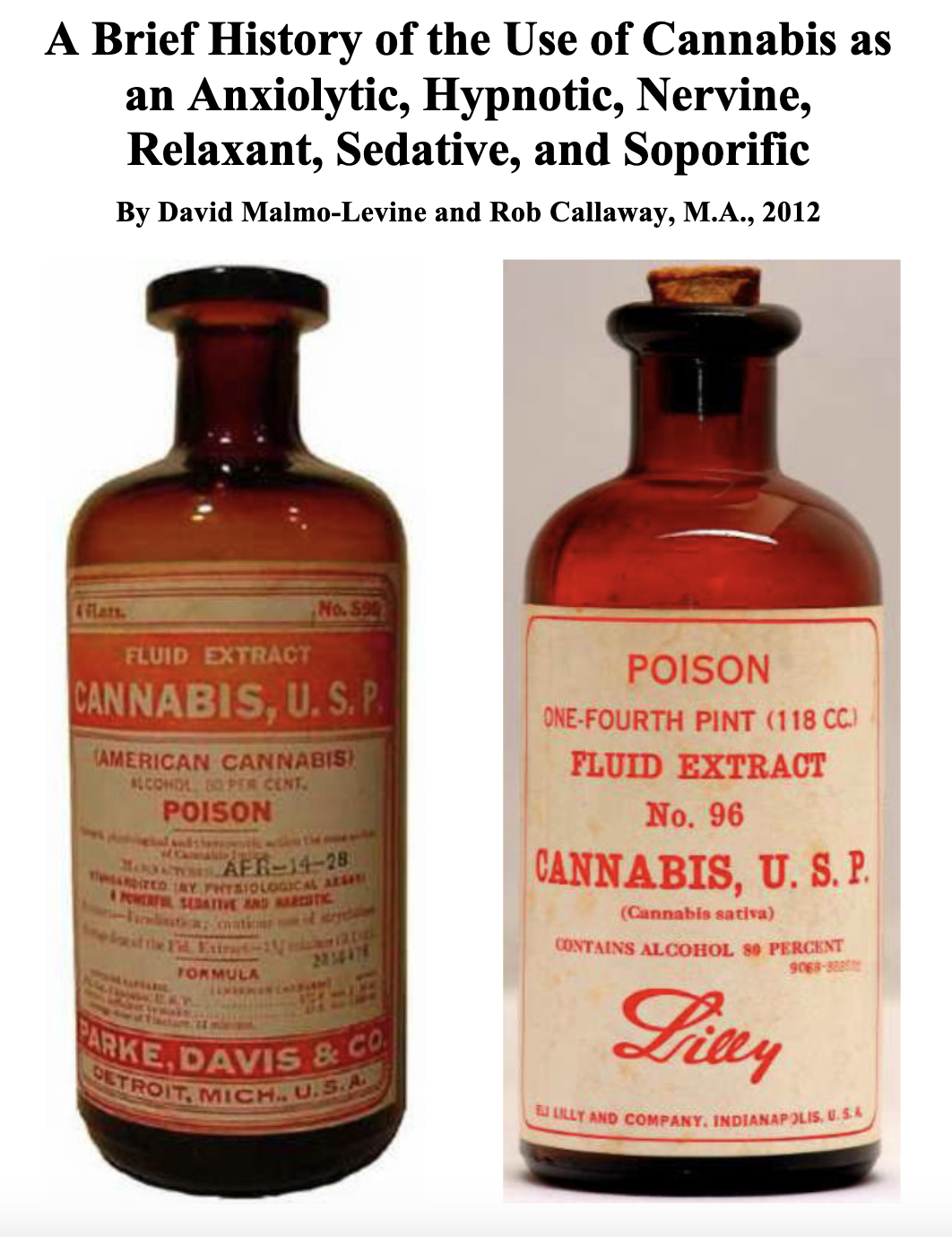
#4 Cannabis is safer than all the synthetic anti-depressants, ADHD meds and alcohol.
Serotonin Specific Reuptake Inhibitors (SSRI drugs) are often prescribed for depression and anxiety. They are also known to increase the risk of homicide, suicide or self-harm. None of these outcomes have been associated with cannabis use.
These synthetic SSRI drugs are known to be toxic in high doses, and deaths have been recorded from overdose. Cannabis, on the other hand, is one of the least toxic medically active drugs known – there are no credible cases of death from cannabis overdose on record.
The efficacy of these SSRI drugs is now also in doubt, whereas there seems to be a strong consensus throughout history and all over the world that cannabis is a powerful and effective anti-depressant and relaxant.
https://en.wikipedia.org/wiki/Selective_serotonin_reuptake_inhibitor#Overdose
#5 Cannabis does not harm teens if they use it properly.
There has been a lot of talk lately about how cannabis harms the developing minds of young people – that it increases psychosis and schizophrenia, and lowers I.Q. scores. These new myths are easily proven false.
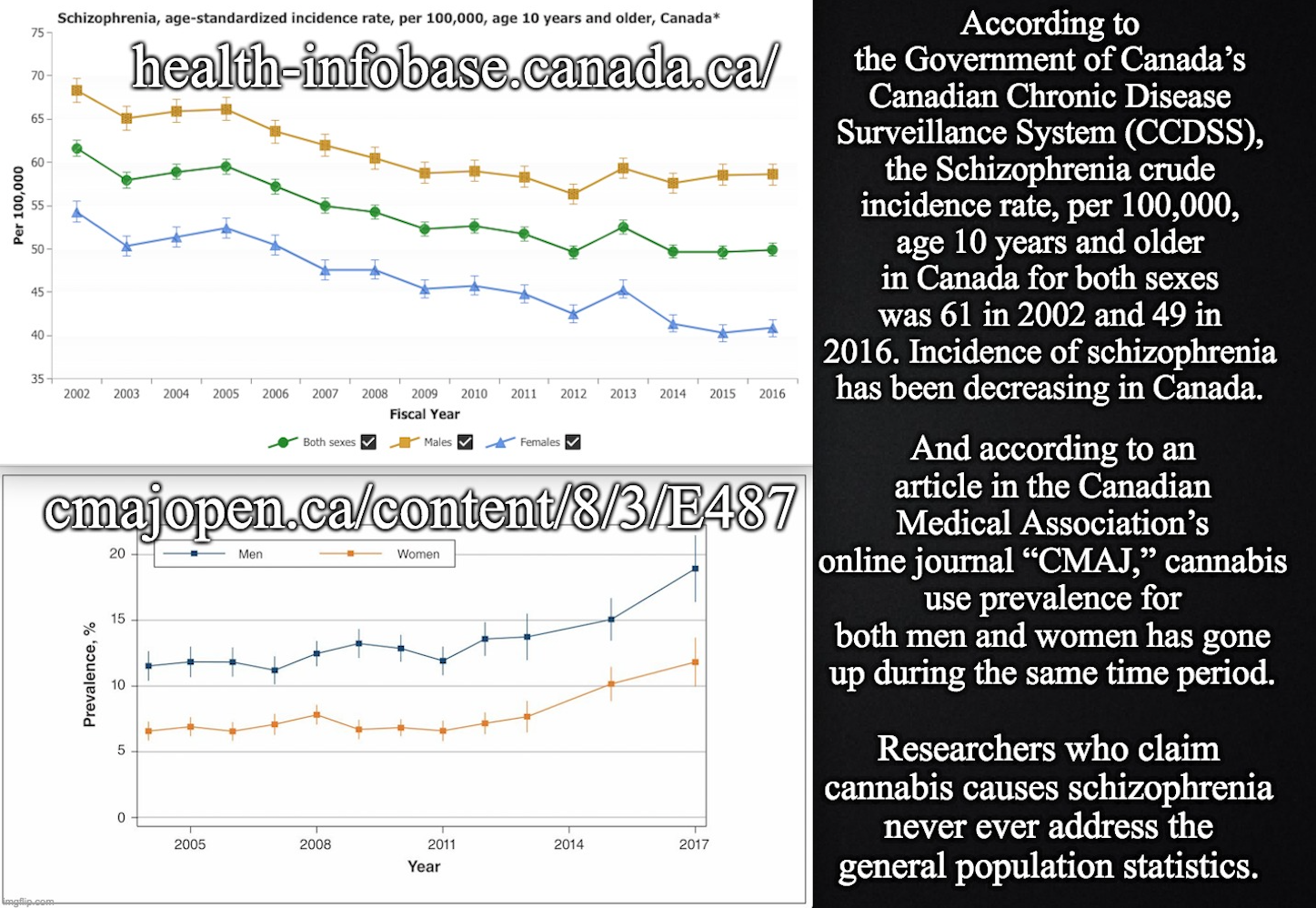
Image from https://pot-facts.ca/even-more-evidence-of-cannabis-psychosis-being-a-fraudulent-scam/
When one looks at statistics in the general population, psychosis/schizophrenia rates have remained constant or perhaps declined a bit, while I. tests are adjusted every year to account for the fact that people are getting smarter – it’s called the “Flynn effect.”
Cannabis use rates have risen dramatically in the last 60 years, but the cannabis prohibitionists have yet to associate any problem that has risen in a way that would match the increase in use. There are no inherent harms with cannabis use – there is only proper use and abuse.
#6 Teens are smart enough to use cannabis properly.
Most teens are using cannabis properly right now with very little training. In pot rallies all over the world, young people gather in groups numbering in the tens of thousands, while serious overdoses (always non-fatal) involving an ambulance trip to the hospital from these events can be counted on one or two hands.
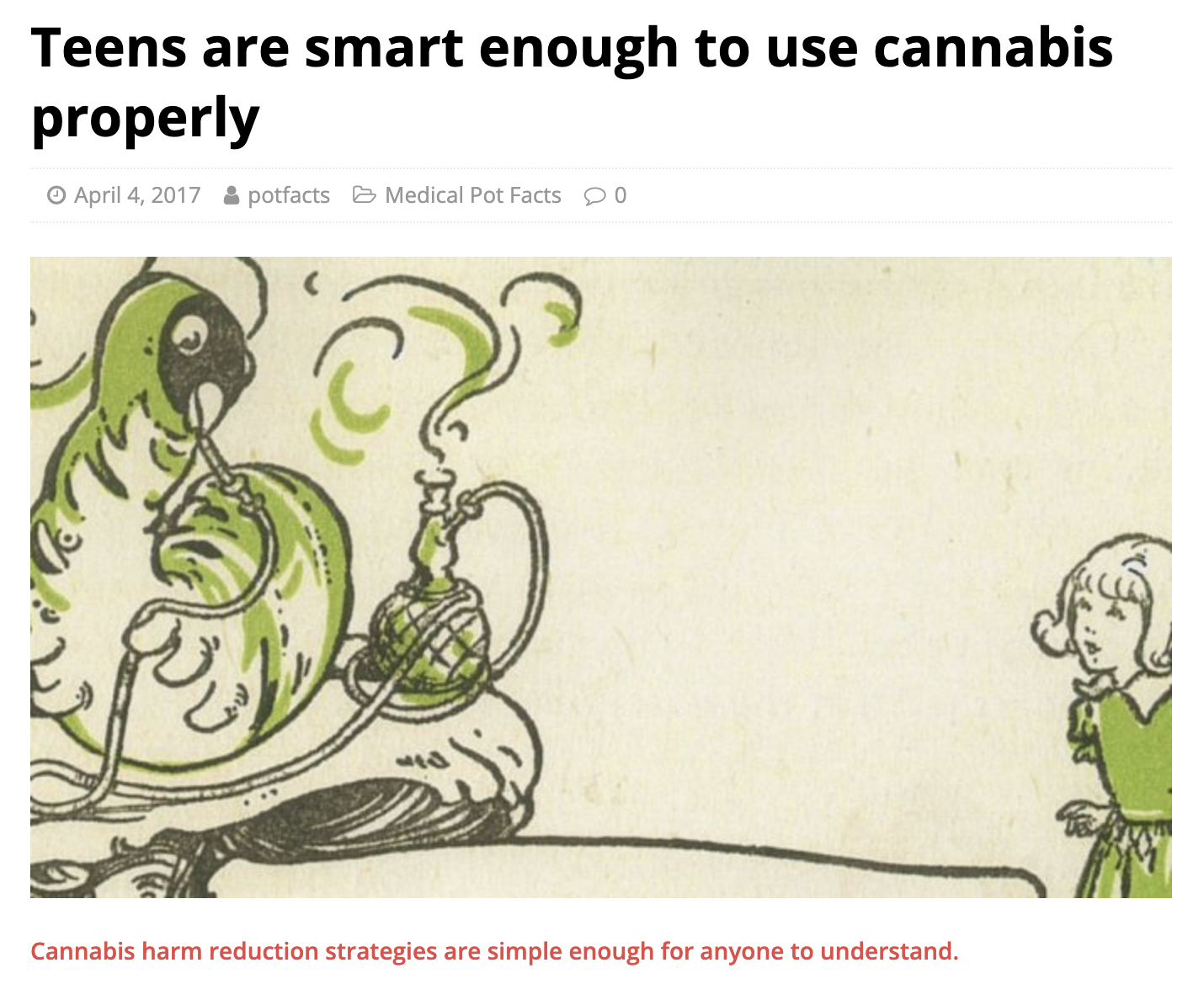
Image from https://pot-facts.ca/teens-are-smart-enough-to-use-cannabis-properly/
The majority of people who took too much cannabis at the Vancouver cannabis farmer’s markets walked to the hospital under their own power. Compare that with an average weekend on a street with a strip of bars – the number of alcohol overdoses from these nights are significantly higher, and unlike the cannabis overdoses, the alcohol overdoses carry with them the risk of death. 3200 to 3875 Canadians die every year from “alcohol-induced deaths” – over ten people each day.
The more people use cannabis, the less they drink – increases in cannabis use can be seen as alcohol harm-reduction.
https://onlinelibrary.wiley.com/doi/10.1111/dar.12323
Can cannabis substitute for alcohol in people receiving treatment to reduce their drinking?
#7 Teens follow advice better than they follow orders.
Cannabis is “universally available” to young people in spite of draconian laws designed to keep them from it. The only thing that has been found to reduce cannabis use amongst teens is legalization, such as the kind found in Colorado, or the introduction of medical marijuana laws.

Image from https://pot-facts.ca/teens-follow-advice-better-than-they-follow-orders/
This interesting side-effect of cannabis liberalization can be seen as the opposite of the “forbidden fruit” phenomenon – that which is no longer forbidden becomes normal and boring. Simple cannabis harm-reduction techniques can easily be taught to teens, or anyone!
No ‘significant issues’ from marijuana legalization, says Colorado medical officer
#8 The powers that be use fear of harm to the young as a way to scapegoat minorities and control people.
Jews, witches, heretics and homosexuals have all been accused of wanting to harm young people. One of the only ways to justify horrific brutality against harmless groups of people is to lie about them coming to defile your kids. This has been well-documented.
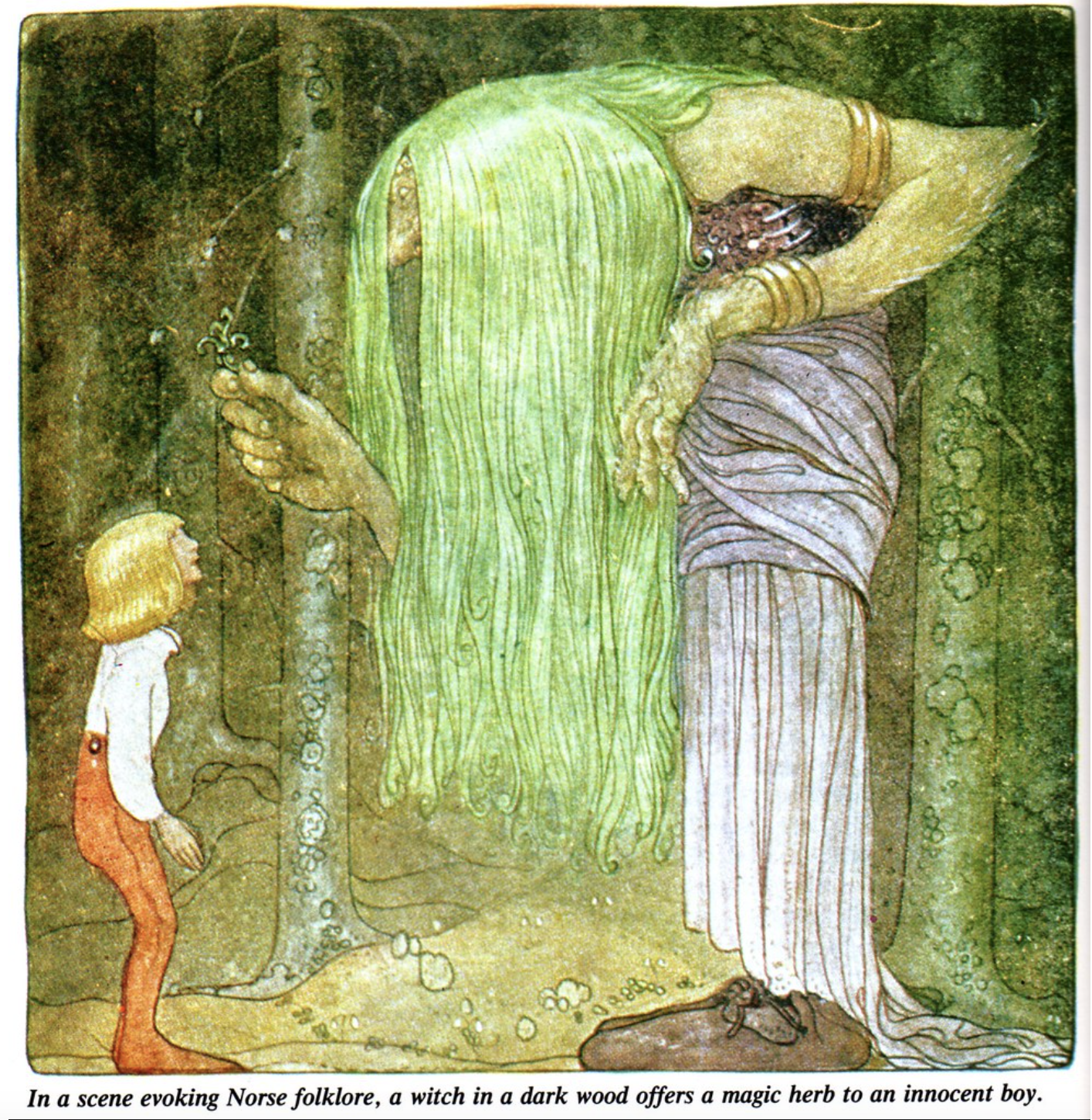
The scapegoater never provides conclusive evidence of this harm – public pronouncements repeated in the mainstream media seems to do the job well enough. The burden of proof for establishing inherent harmfulness should be on the people pointing the fingers, and not the people being accused of being inherently harmful having to prove this is not the case.
#9 Experts have recommended that 16 be the age limit to buy cannabis.
In 2002, the Canadian Senate recommended amendments to the Controlled Drugs And Substances Act, “to permit persons over the age of 16 to procure cannabis and its derivatives at duly licensed distribution centres.”
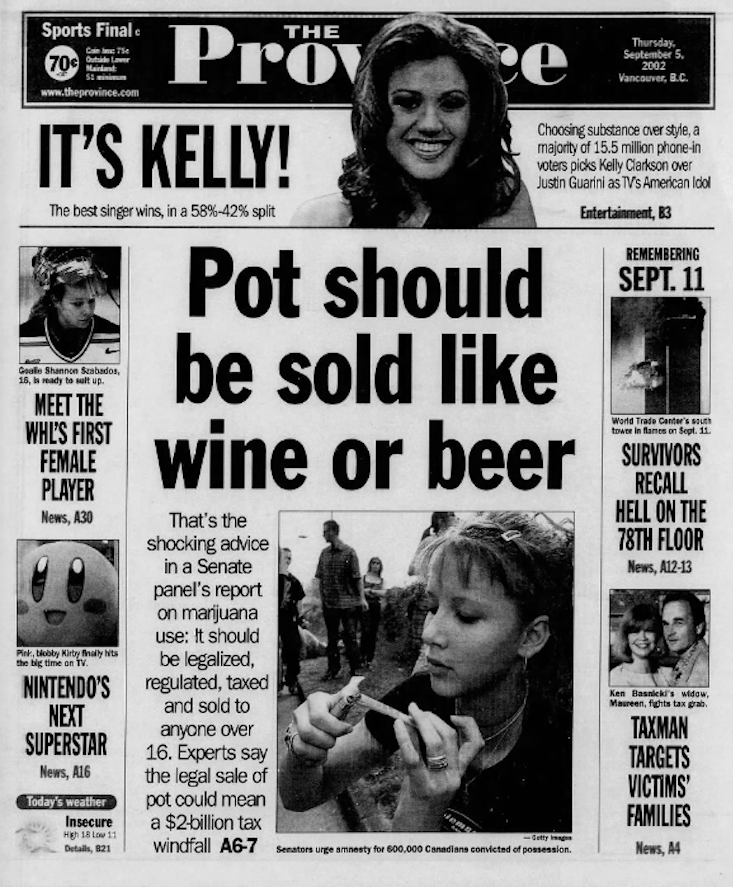
“Pot should be sold like wine or beer – That’s the shocking advice in a Senate panel’s report on marijuana use: It should be legalized, regulated, taxed and sold to anyone over 16. Experts say the legal sale of pot could mean a $2-billion tax windfall,” The Province, Vancouver, B.C., September 5th, 2002, p. 1
The wisdom behind this recommendation is that it is more important to protect teens from the black market than from cannabis use. Those who understand human nature have always held similar beliefs.
Back in 1969, anthropologist Margaret Mead told US senators that marijuana should be legalized for anyone over 16, and that drinking and voting ages should match the draft age. She said marijuana “doesn’t have the toxic effects that cigarettes have” and is milder than liquor. Therefore, she said, it should be permitted at a younger age than tobacco and alcohol.
“It is a new form of tyranny by the old over the young. You have the adult with a cocktail in one hand and a cigarette in the other saying ‘you cannot’ to the child. This is untenable.” – Margaret Mead
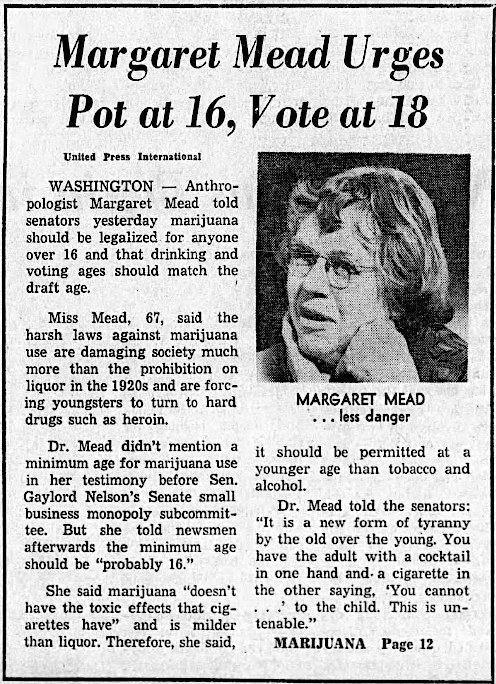
“Margaret Mead Urges Pot at 16, Vote at 18,” The Boston Globe, Boston, Massachusetts, October 28th, 1969, pp. 1, 12
Having a lower age limit than alcohol would send the right message to teens – that cannabis is less dangerous than alcohol. Teens 15 or younger could still use cannabis with parental or doctor supervision, just like parents can give their minors children alcohol. This could prevent a situation like the one currently suffered by teens in Washington State, who now face a five year maximum felony rather than the 90 day maximum misdemeanor they used to face before legalization occurred in 2012.
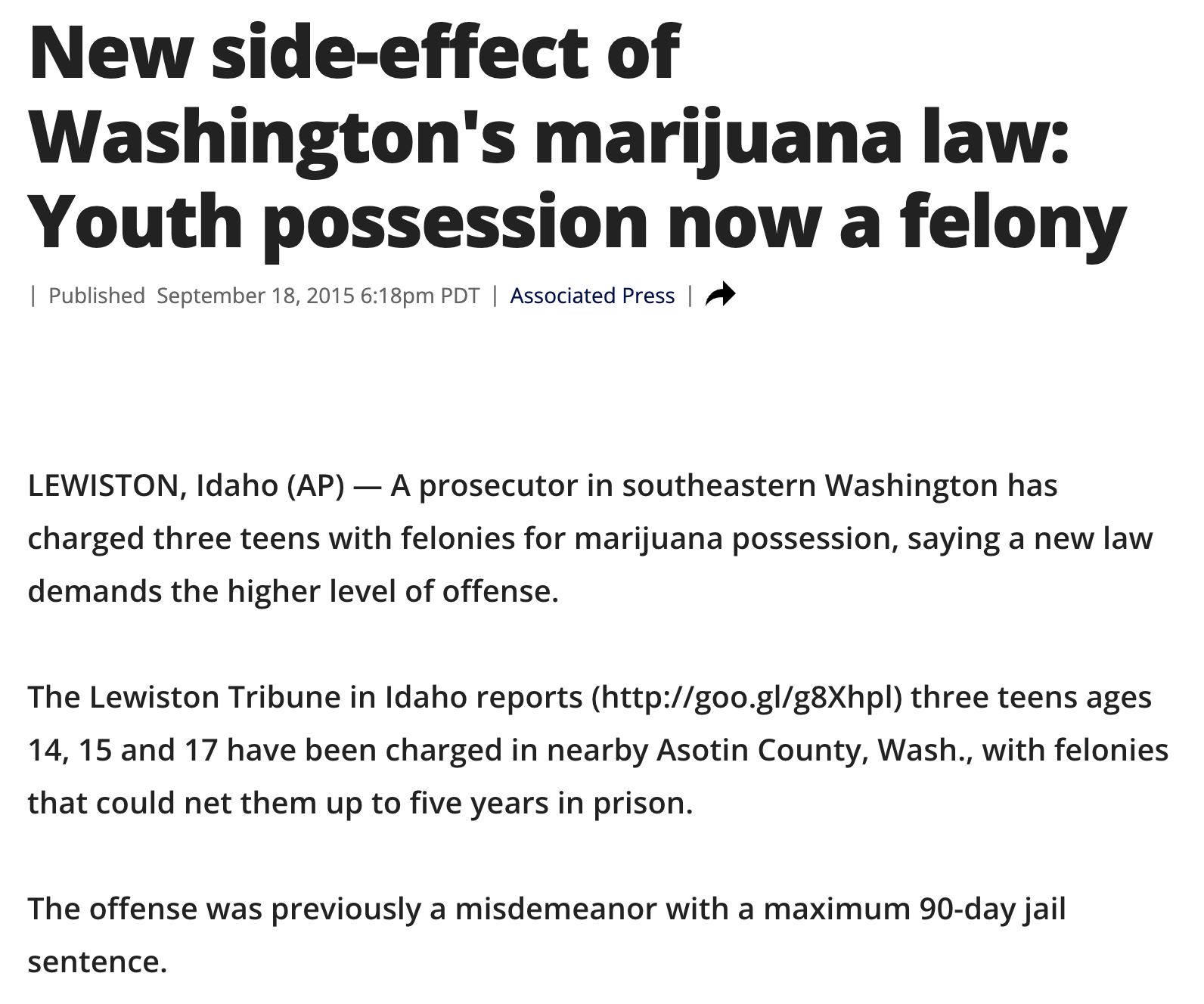
https://www.fox13seattle.com/news/new-side-effect-of-washingtons-marijuana-law-youth-possession-now-a-felony
In conclusion, let’s end the paranoia about teens using cannabis, and remember that the harms of prohibition greatly outweigh the harms of cannabis. Cannabis is a useful medicine and also far safer than alcohol, so let’s treat it that way.



